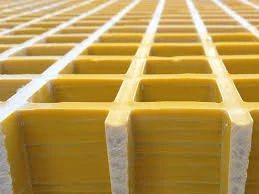loading...
- No. 9, Xingyuan South Street, Dongwaihuan Road, Zaoqiang County, Hengshui, Hebei, China
- admin@zjcomposites.com
- +86 15097380338
- Welcome to visit our website!
walkway frp grating
Exploring the Benefits of Walkway FRP Grating A Modern Solution for Safe and Durable Flooring
In today's world, safety and durability are paramount in the design and construction of walkways in various industrial and commercial settings. One of the most innovative solutions available for creating robust walkways is Fiber Reinforced Plastic (FRP) grating. This advanced material offers numerous advantages over traditional flooring options, making it an appealing choice for a wide range of applications.
What is FRP Grating?
FRP grating is composed of a matrix of fiberglass and resin, resulting in a lightweight yet highly durable flooring material. It is designed to withstand harsh environmental conditions, including corrosive chemicals, extreme temperatures, and heavy loads. This means that FRP grating can be used in settings such as chemical plants, wastewater treatment facilities, and food processing plants, where traditional materials like wood or metal might fail over time.
Key Benefits of Walkway FRP Grating
1. Corrosion Resistance One of the most significant advantages of FRP grating is its inherent resistance to corrosion. Unlike metal grating, which can rust and degrade when exposed to moisture and chemicals, FRP grating remains intact and functional, reducing maintenance costs and replacement frequency.
2. Lightweight FRP grating is significantly lighter than traditional materials, such as steel or concrete. This lightweight characteristic makes it easier to handle and install, reducing labor costs and time. Installation can often be completed without the need for heavy equipment, further streamlining the process.
3. Slip Resistance Safety is a primary consideration for walkway design. FRP grating often features a slip-resistant surface that provides excellent traction, even in wet or oily conditions. This property significantly enhances safety for workers and pedestrians, helping to prevent accidents and injuries.
walkway frp grating

4. Customizability FRP grating can be manufactured in various colors, sizes, and thicknesses to meet specific project requirements. This versatility allows architects and engineers to design walkways that fit seamlessly into their overall design vision while meeting structural needs.
5. Fire Resistance Many FRP grating products meet stringent fire safety codes, making them suitable for applications where fire resistance is a critical concern. This characteristic is particularly vital in industries like petrochemicals and public infrastructure, where safety standards are strictly enforced.
6. Environmental Sustainability With increasing awareness of environmental issues, the demand for sustainable materials in construction is on the rise. FRP grating offers an eco-friendly alternative as it can be produced using recycled materials. Furthermore, its long lifespan means fewer materials need to be produced and disposed of over time.
Applications of Walkway FRP Grating
Due to its array of advantages, walkway FRP grating is being utilized in various sectors. In industrial settings, it is commonly employed in platforms, catwalks, and stair treads. In commercial environments, it can be found in shopping centers and public facilities, where durability and aesthetics are equally important. Additionally, it is gaining traction in outdoor applications, such as parks and recreational areas, thanks to its weather resistance and slip prevention features.
Conclusion
The use of walkway FRP grating represents a significant advancement in flooring technology. Its combination of strength, lightweight properties, and resistance to corrosion and slip makes it an outstanding choice for a variety of applications. As industries continue to seek safer and more sustainable solutions, FRP grating stands out as a reliable material that meets modern demands. Whether for industrial or commercial use, investing in FRP grating means prioritizing safety, durability, and efficiency—qualities essential for any successful project. In a rapidly evolving landscape, walkway FRP grating is poised to become a staple in creating safe, functional, and visually appealing environments.
-
The Rise of FRP Profiles: Strong, Lightweight, and Built to LastNewsJul.14,2025
-
SMC Panel Tanks: A Modern Water Storage Solution for All EnvironmentsNewsJul.14,2025
-
GRP Grating: A Modern Solution for Safe and Durable Access SystemsNewsJul.14,2025
-
Galvanized Steel Water Tanks: Durable, Reliable, and Ready for UseNewsJul.14,2025
-
FRP Mini Mesh Grating: The Safer, Smarter Flooring SolutionNewsJul.14,2025
-
Exploring FRP Vessels: Durable Solutions for Modern Fluid HandlingNewsJul.14,2025
-
GRP Structures: The Future of Lightweight, High-Performance EngineeringNewsJun.20,2025
